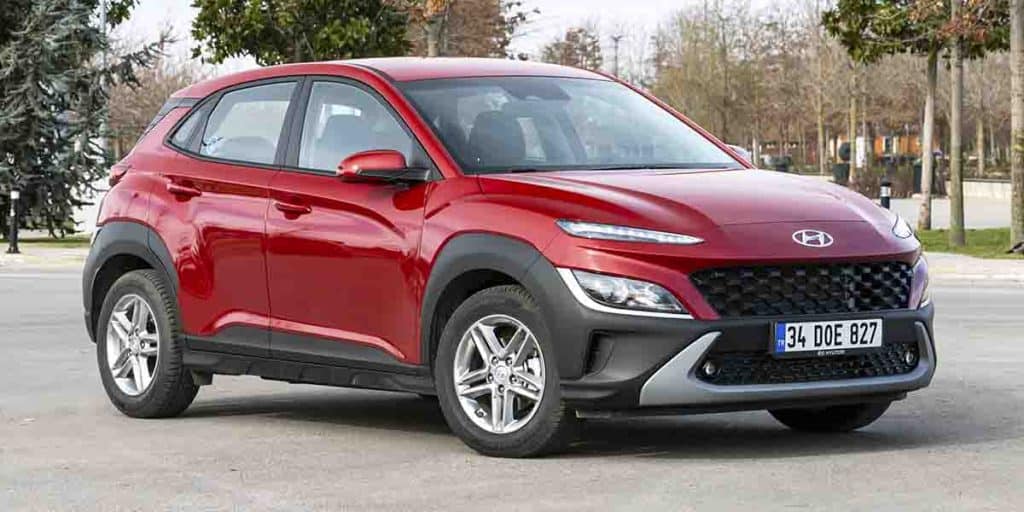CVT, or Continuously Variable Transmission, has been a hot topic in the automotive world. While it offers fuel efficiency and a smoother ride, some folks prefer the traditional feel and performance of non-CVT transmissions. If you’re one of them, you’re in the right place.
If you’re in the market for an SUV without a CVT transmission, you have excellent options like the Ford Explorer, Chevrolet Tahoe, and Jeep Grand Cherokee. These vehicles offer a blend of durability, performance, and lower maintenance requirements, making them ideal choices for various driving needs.
7 Popular SUVs Without CVT Transmissions
SUVs Without CVT Transmission of List
You’re not alone in your quest for SUVs without CVT transmissions. Many drivers prefer the tactile feedback, robustness, and driving experience that come with traditional automatic or manual transmissions. In this section, we’ll provide a comprehensive list of SUVs that fit the bill, along with key features that make them stand out.
Ford Explorer

- Transmission Type: 10-speed automatic
- Key Features: All-wheel drive, spacious interior, and advanced safety features.
- Why It’s a Good Choice: Known for its durability and off-road capabilities, the Ford Explorer is a family-friendly option that doesn’t compromise on power.
Chevrolet Tahoe

- Transmission Type: 10-speed automatic
- Key Features: V8 engine, ample cargo space, and towing capabilities.
- Why It’s a Good Choice: If you’re looking for a large SUV that can handle anything from city driving to towing a boat, the Tahoe is for you.
Jeep Grand Cherokee

- Transmission Type: 8-speed automatic
- Key Features: Off-road capabilities, luxurious interior, and a range of engine options.
- Why It’s a Good Choice: Perfect for those who want a blend of luxury and ruggedness.
Toyota 4Runner

- Transmission Type: 5-speed automatic
- Key Features: Off-road capabilities, durable build, and a strong V6 engine.
- Why It’s a Good Choice: A reliable SUV that’s built to last, making it a great investment.
Nissan Pathfinder (older models)

- Transmission Type: 7-speed automatic
- Key Features: Seven-passenger seating, decent cargo space, and a comfortable ride.
- Why It’s a Good Choice: Older models of the Pathfinder offer non-CVT options for those looking for a budget-friendly SUV.
- You Can See: Honda Civic Cvt Transmission Fluid Change Interval
Comparison Between CVT and Non-CVT Transmissions
CVT and non-CVT transmissions each have their unique sets of advantages and disadvantages. While CVTs are known for their fuel efficiency and smooth driving experience, non-CVTs are often lauded for their durability and performance.
Comparison Table CVT and Non-CVT Transmissions
| Transmission Type | Pros | Cons | Best For |
| CVT | Fuel Efficiency, Smooth Ride | Less Robust, Higher Maintenance Cost | City Driving, Fuel Economy |
| Non-CVT | Durability, Performance | Less Fuel Efficient, More Gear Shifts | Off-Roading, Towing |
Why Manufacturers Choose One Over the Other
Manufacturers often choose CVT for smaller, fuel-efficient cars because it’s cost-effective and meets the demands of the average city driver. On the other hand, non-CVT transmissions are commonly found in larger vehicles like SUVs and trucks, which require more robust and durable components for off-roading and towing.
Impact on Vehicle Performance and Maintenance
Non-CVT transmissions are generally easier and less expensive to repair, making them a preferable choice for those who are handy with car maintenance. CVTs, however, often require specialized knowledge and parts, which can be more expensive in the long run.

Credit: rideplusdrive.com
FAQs
What is a CVT Transmission?
CVT stands for Continuously Variable Transmission. Unlike traditional transmissions that use a set number of gear ratios, CVTs continuously vary the transmission ratio, making for a smoother driving experience.
Why do some manufacturers prefer CVT Transmissions?
Manufacturers often opt for CVTs in smaller, fuel-efficient vehicles because they are cost-effective and offer a smoother ride, appealing to the average city driver.
What are the common problems associated with CVT Transmissions?
The most common issues with CVTs include overheating, slipping, and premature wear and tear, which can lead to more frequent and potentially costly repairs.
Are there any new cars without CVT Transmissions?
Yes, many manufacturers still produce cars with traditional automatic or manual transmissions, especially in larger vehicles like SUVs and trucks that require more robust components.
What are the Ford transmission oil pan torque specs?
The torque specs for the Ford transmission oil pan can vary by model, but they generally range from 10-12 ft-lbs.
Conclusion
When it comes to choosing an SUV, the type of transmission can be a significant factor. While CVT transmissions offer fuel efficiency and a smooth ride, they may not be everyone’s cup of tea. For those who prefer a more traditional driving experience, there are plenty of SUV options without CVT transmissions.
See Also:

